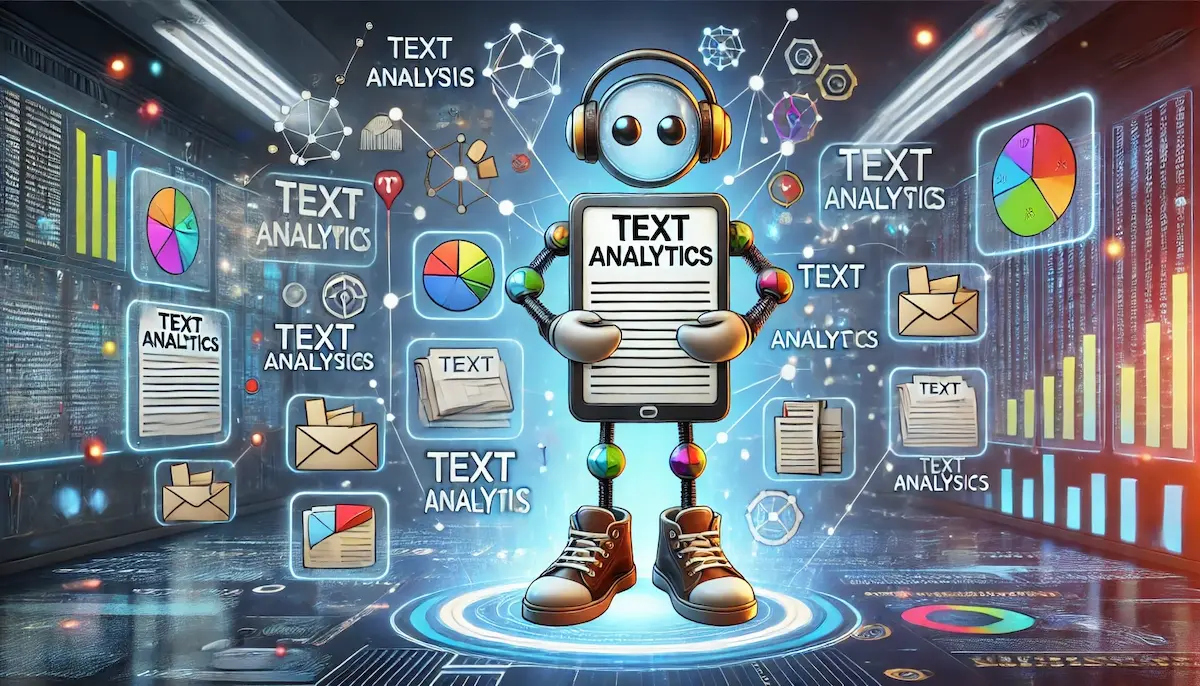Text analytics, also known as text mining, is a crucial field in data science that involves deriving meaningful insights and patterns from text data. With the exponential growth of unstructured data from various sources like social media, emails, reviews, and documents, text analytics has become increasingly important for businesses and organizations to understand and leverage this information effectively.
Understanding Text Analytics
Text analytics involves the process of transforming unstructured text into structured data for analysis. This process uses natural language processing (NLP), machine learning, and statistical methods to interpret and analyze textual information. The insights gained from text analytics can help in decision-making, improving customer experiences, detecting trends, and much more.
The Importance of Text Analytics
- Customer Insights: Text analytics helps businesses understand customer sentiments, preferences, and feedback from reviews, social media posts, and surveys.
- Improved Decision-Making: By analyzing text data, organizations can identify trends, patterns, and anomalies that inform strategic decisions.
- Enhanced Marketing Strategies: Marketers can leverage text analytics to tailor campaigns, understand market dynamics, and gauge the effectiveness of their efforts.
- Operational Efficiency: Automating the processing of large volumes of text data saves time and resources, improving operational efficiency.
- Risk Management: Text analytics aids in monitoring and mitigating risks by analyzing compliance documents, financial reports, and other critical texts.
Key Techniques in Text Analytics
- Text Preprocessing: This step involves cleaning and preparing text data for analysis. Techniques include tokenization, stemming, lemmatization, and stop-word removal.
- Sentiment Analysis: Sentiment analysis determines the emotional tone behind a series of words, helping to understand the sentiments expressed in text data.
- Topic Modeling: Topic modeling techniques like Latent Dirichlet Allocation (LDA) are used to discover abstract topics within a collection of documents.
- Named Entity Recognition (NER): NER identifies and classifies entities (such as names of people, organizations, locations) in text into predefined categories.
- Text Classification: Text classification assigns predefined categories to text documents, such as spam detection in emails or categorizing news articles.
- Clustering: Clustering groups similar documents together based on their content, which can be useful for organizing large sets of text data.
- Keyword Extraction: This technique identifies the most relevant keywords or phrases within a text, useful for summarization and indexing.
Applications of Text Analytics
- Customer Service: Automated analysis of customer service tickets and chat logs to identify common issues and improve service.
- Market Research: Analyzing customer feedback, reviews, and social media to gauge market trends and consumer preferences.
- Healthcare: Processing clinical notes and medical records to identify patterns, support diagnostics, and improve patient care.
- Finance: Analyzing financial news, reports, and documents to inform investment decisions and detect fraud.
- Human Resources: Automating the analysis of resumes and job descriptions to match candidates to job openings efficiently.
Challenges in Text Analytics
- Data Quality: Text data can be noisy, unstructured, and inconsistent, making it challenging to process and analyze.
- Language Complexity: Natural language is inherently complex, with nuances, ambiguities, and variations that complicate analysis.
- Scalability: Processing large volumes of text data efficiently requires significant computational resources.
- Interpretability: Ensuring that the results of text analytics are understandable and actionable for decision-makers.
- Privacy Concerns: Analyzing personal or sensitive information requires strict adherence to data privacy regulations and ethical considerations.
Best Practices for Effective Text Analytics
- Data Preparation: Invest time in cleaning and preprocessing text data to ensure high-quality inputs for analysis.
- Choosing the Right Tools: Utilize appropriate NLP and machine learning tools and frameworks suited to the specific text analytics task.
- Continuous Improvement: Regularly update models and algorithms to adapt to new data and evolving language use.
- Cross-Functional Collaboration: Work with domain experts to ensure that the insights gained are relevant and actionable.
- Ethical Considerations: Ensure that text analytics practices comply with privacy laws and ethical standards to protect individuals’ data.
In conclusion, text analytics is a powerful tool that enables organizations to unlock valuable insights from unstructured text data. By leveraging advanced techniques and best practices, businesses can enhance decision-making, improve customer experiences, and drive operational efficiencies.
Blockfine thanks you for reading and hopes you found this article helpful.
